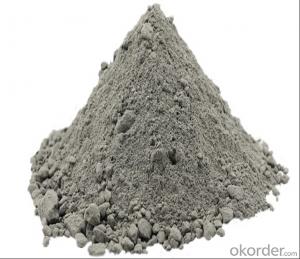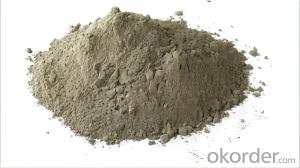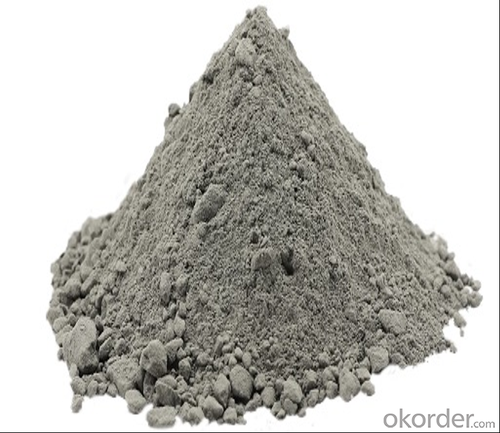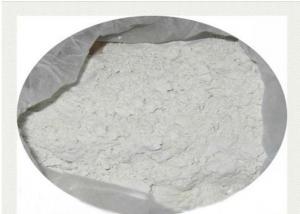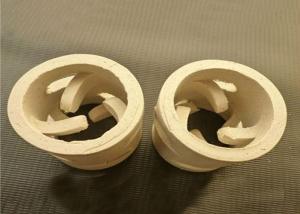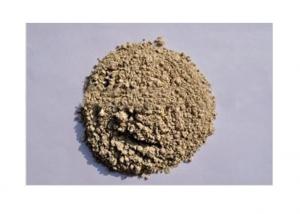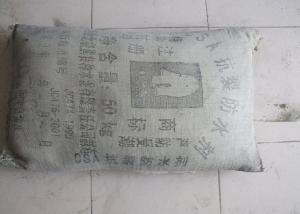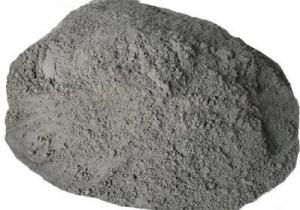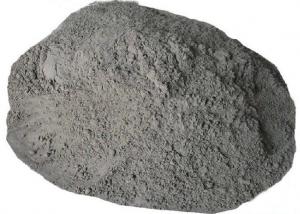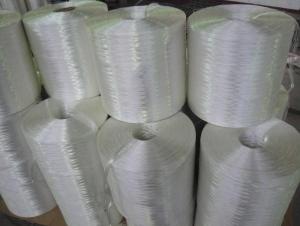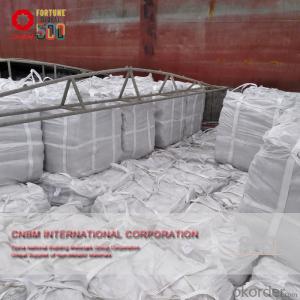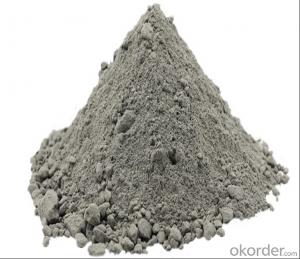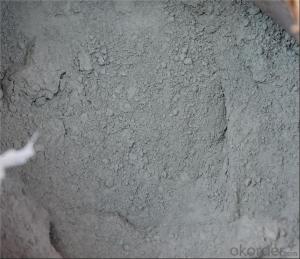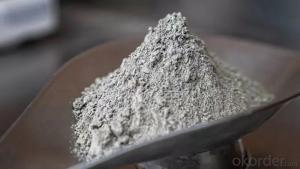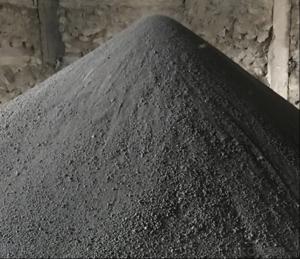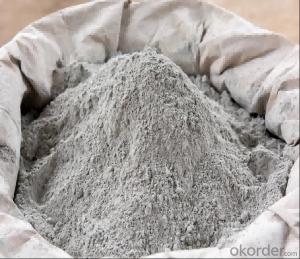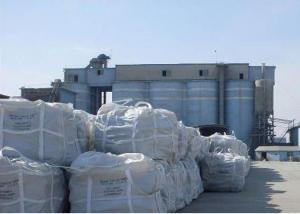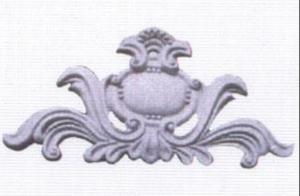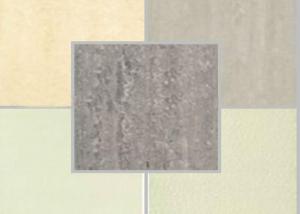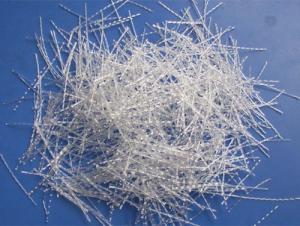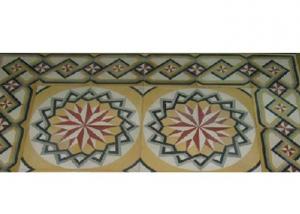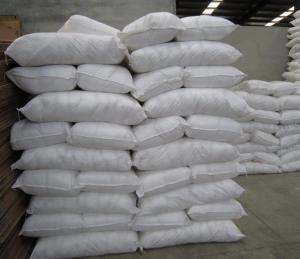Highest quality for Portland cement 52.5
- Loading Port:
- China main port
- Payment Terms:
- TT OR LC
- Min Order Qty:
- 100 m.t.
- Supply Capability:
- 500000 m.t./month
OKorder Service Pledge
OKorder Financial Service
You Might Also Like
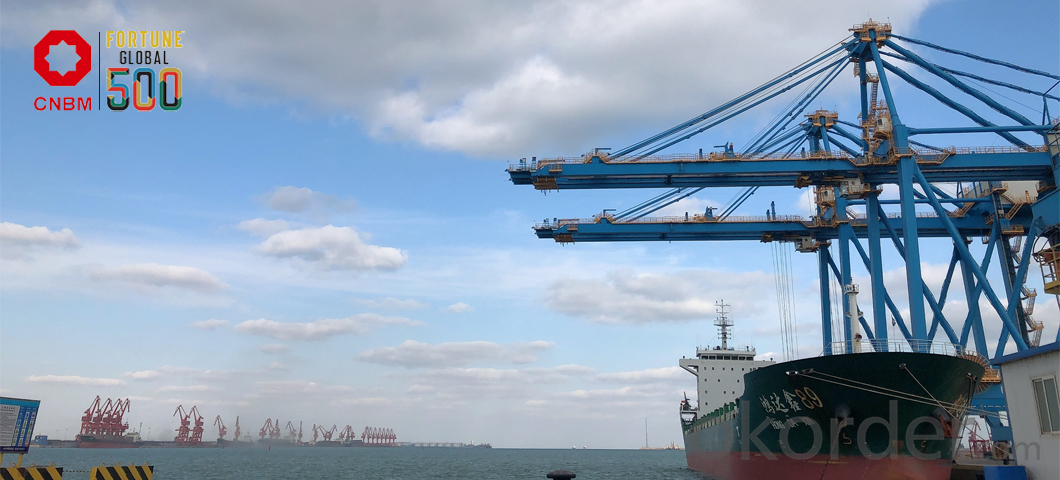
PORTLAND CEMENT
Portland cement is the most common type of cement in general use around the world, used as a basic ingredient of concrete, mortar, stucco, and most non-specialty grout.
It is a fine powder produced by heating materials in a kiln to form what is called clinker, grinding the clinker, and adding small amounts of other materials.
Several types of Portland cement are available with the most common being called ordinary Portland cement (OPC) which is grey in color, but a white Portland cement is also available.
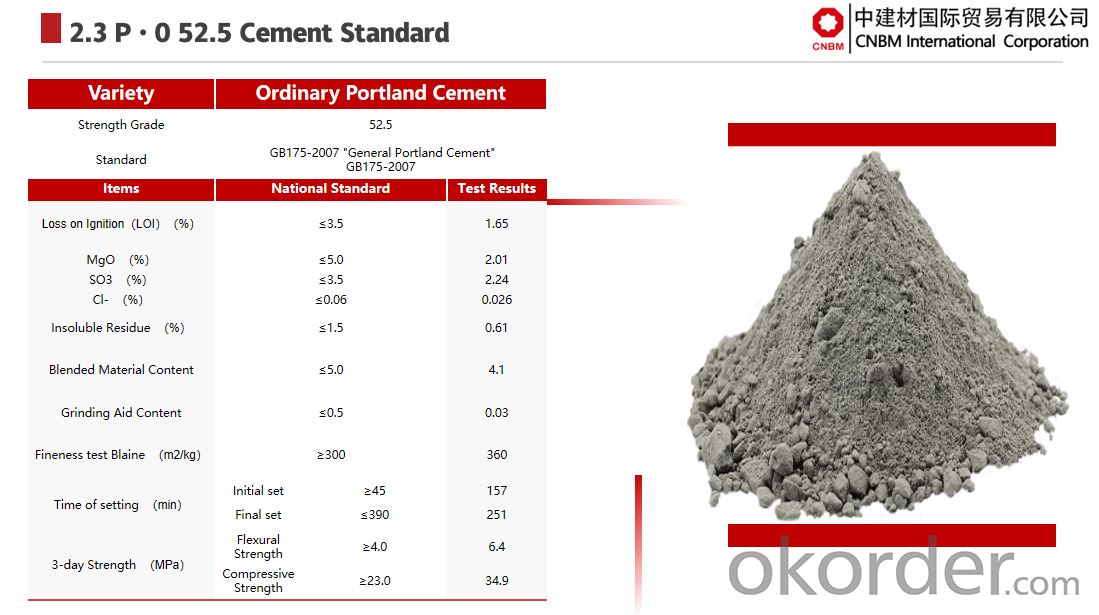
Application
CNBM Cement can be used for all types of architectural or structural concrete construction. Such application as pre-cast panels and systems, cast-in-place, masonry units, tilt-up panel systems, roofing tiles, terrazzo floors, highway median barriers, tile grout, swimming pools, stucco, culture stone,colored masonry products, cement paints and coatings, and ornamental precast concrete items.
CNBM INTERNATIONAL CORPORATION (short for the Company) is a subsidiary of China National Building Material Group Co., Ltd. (short of CNBM Group). China National Building Material Group is a state owned enterprise under directly management of the State-owned Assets Supervision and Administration Commission of the State Council, and ranked 187 in the world's top 500 in 2019. China National Building Materials Group is the world's largest comprehensive building materials industry group, the world's leading new material developer and comprehensive service provider, and has the strongest scientific research strength in the field of building materials and non-metal new materials. CNBM INTERNATIONAL CORPORATION is a brand-new platform built by China National Building Materials Group that focuses on non-metallic materials trading.
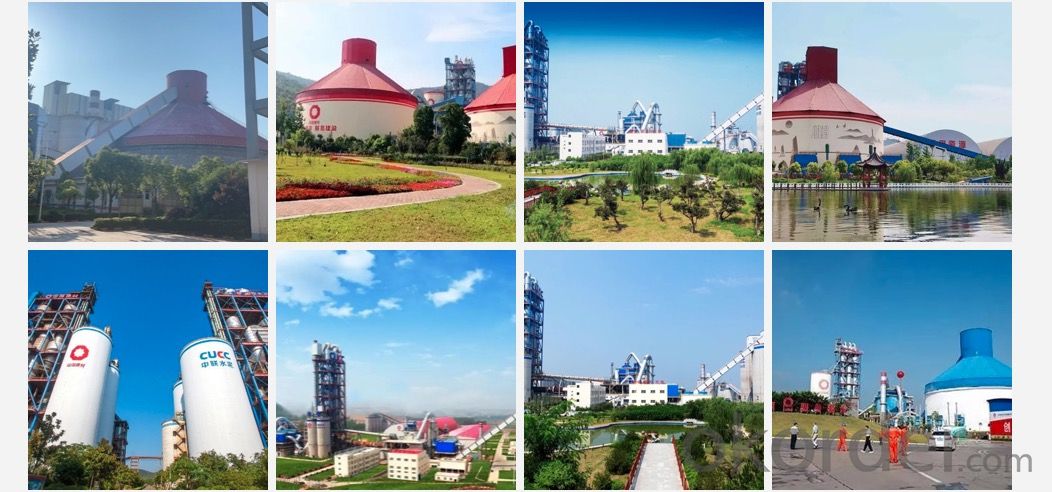
Q:Are you a trading company or manufacturer?
A:CNBM is a large-scale central governmental industrial group with its own manufacturing sector, research and development sector, trading sector and logistics sector.
Q:I have some special requirement about specifications.
A:We have a well-rounded product range, which endows us with the capability of applying many special specifications. Please feel free to contact us with yours.
Q:Do you accept OEM service?
A:Yes, we do.
Q:What is your delivery time?
A:It depends on the size/complexity of your order and our own production schedule. Usually we provide a faster delivery than the industry's average.
Q:What is the payment term?
A:TT and LC are both Okay.
Q:Can I have my own logo on the product?
A:Sure, we can apply your own logo on the products according to your drawings.
- Q: what are the types of cement availabale and give their applications?
- Do you mean cement or concrete? Cement is just sand and lime; concrete has a stone mix added. Cement can be used as a mortar to bind stone and brick, and as a stucco surface for EFIS material, brick, concrete block etc. They can differ in the mix ratio and color. Concrete varies basically by color, strength, and drying time. It's used for sidewalks, high speed roadways, foundations, concrete blocks, retaining walls, building structure, floor slabs, steps, a base for built-up roofs, roadway curb and gutter, storm water drainage basins and inlet structures, bridges, bridge aprons, swimming pools, cast sculptures, kitchen counter tops, dams, and piers for bridges and off-shore drilling platforms,
- Q: WHY is chemical cement less abundant in SHALE? WHY is it variable in conglomerate?
- Chemical cement in shale is less abundant because shale particles are so small can normally bind the rock together without an additional bonding from a chemical cement. Chemical cement in sandstone (NOT part of your question), is much more abundant because the particle size - normally visible quartz grains - is such that the rock would disintegrate, as unconsolidated sand, if it were not present. Chemical cement in conglomerate is variable because conglomerate is variable. Is the conglomerate pebble supported or matrix supported? A pebble supported conglomerate may be bound together with a later chemical cement. A matrix supported conglomerate may be bound by the sand or clay rich matrix which will not require any later infilling cement.
- Q: How do you pronounce cement?
- Su-meant.
- Q: if so, are there any special steps i need to do?
- i dont think you should if you see in fish tank stores you might see that most ornaments are made of plastic or just live plants, i think you could try but i really suggest you dont, what if it affects the fish, if you google it maybe youl find an answer, well if you do try dont put like a whole bunch of fish in your aquarium (just incase) then again I could be wrong, just be careful, good luck!
- Q: I want to lay cement all along the bottom of the whole fence , keeping the fence from touching the grass and also keeping my dogs from digging out ?? I just dont know how thick the footer should be or how wide .. Anyone ??
- If you are looking nice ideas for woodworking i can suggest you to check here ( woodworkingplans.kyma ) It's perfect if you are just starting out or if you're a seasoned carpenter. you will like it for sure! It has almost 20.000 woodworking plans and you have a CAD/DWG software to view and edit the plans. You have step-by-step instructions with photos and high quality blueprints and schematics. If you are a beginner this is the easiest way to start your woodworking projects, and if you already have experience you can anyway find a lot of interesting ideas!
- Q: I like for my students to use rubber cement in the classroom. The school distict made us quit using it since it is toxic. I read somewhere that there is a new product that is like rubber cement, just nontoxic.
- Anything regional. Champagne, Stilton cheese, Melton Mowbray Pork Pies.
- Q: What is water/cement ratio?
- some of one and a bit of the other
- Q: how to start new cement industry?
- A new cement industry or a new cement company? Are you actually going to be dealing in cement or is it actually going to be some sort of concrete product manufacturing? It is common for people who are not familiar with concrete to call concrete cement which is only the binder for the final product.
- Q: Due to rising prices of building materials, which affected the progress of the project, need to make a report, such as how to write, and make a note, for example: cement prices nearly doubled
- First of all, should be based on the terms of the construction contract conditions, to figure out the scope of the adjustment of the unit price increase or decrease
- Q: where can i buy refractory cement mix?
- if you're talking about portland, go to the nearest hardware store, it should cost five dollars for a hundred lbs.
Send your message to us
Highest quality for Portland cement 52.5
- Loading Port:
- China main port
- Payment Terms:
- TT OR LC
- Min Order Qty:
- 100 m.t.
- Supply Capability:
- 500000 m.t./month
OKorder Service Pledge
OKorder Financial Service
Similar products
Hot products
Hot Searches
Related keywords
